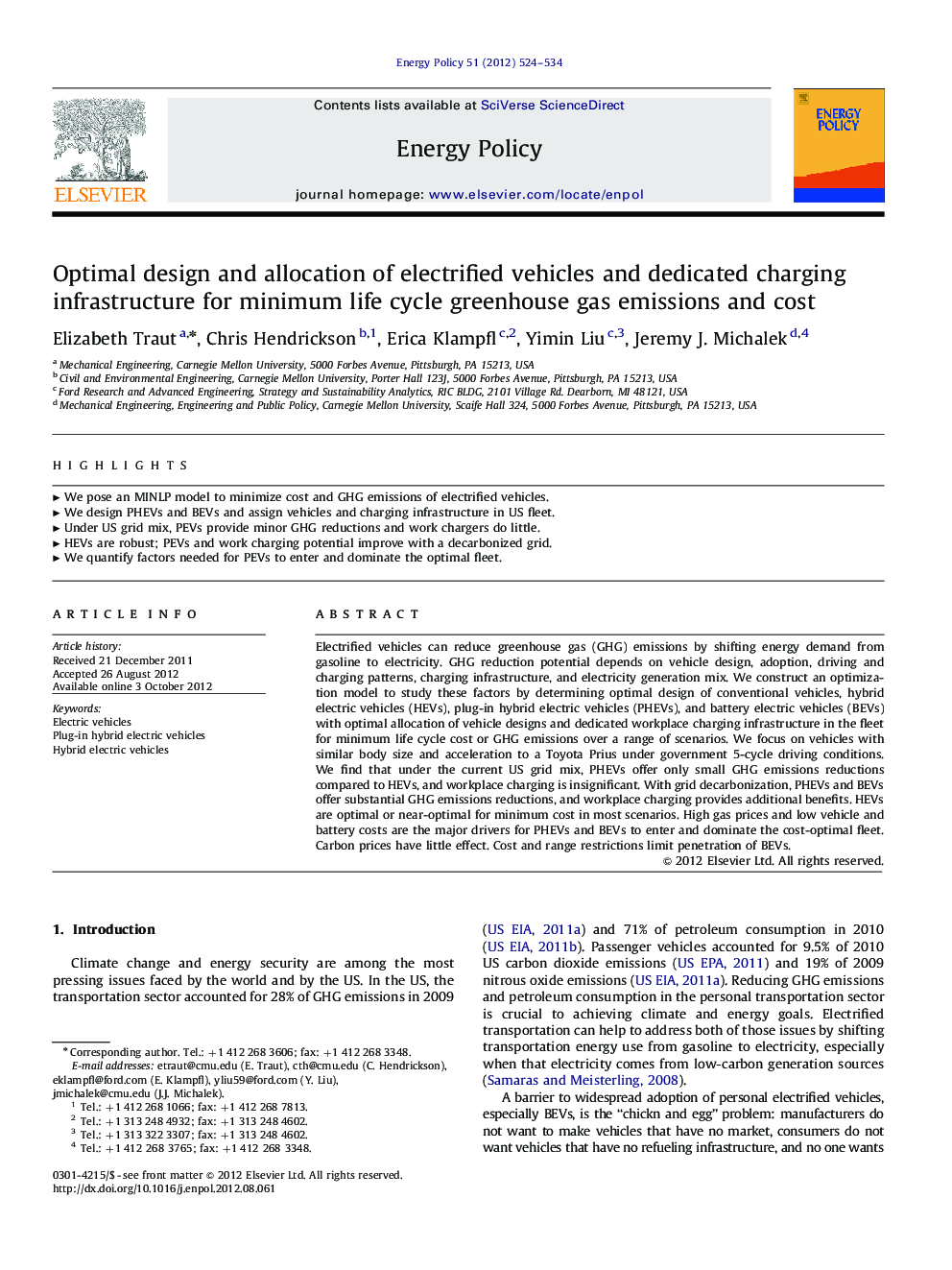| کد مقاله | کد نشریه | سال انتشار | مقاله انگلیسی | نسخه تمام متن |
|---|---|---|---|---|
| 995628 | 1481307 | 2012 | 11 صفحه PDF | دانلود رایگان |

Electrified vehicles can reduce greenhouse gas (GHG) emissions by shifting energy demand from gasoline to electricity. GHG reduction potential depends on vehicle design, adoption, driving and charging patterns, charging infrastructure, and electricity generation mix. We construct an optimization model to study these factors by determining optimal design of conventional vehicles, hybrid electric vehicles (HEVs), plug-in hybrid electric vehicles (PHEVs), and battery electric vehicles (BEVs) with optimal allocation of vehicle designs and dedicated workplace charging infrastructure in the fleet for minimum life cycle cost or GHG emissions over a range of scenarios. We focus on vehicles with similar body size and acceleration to a Toyota Prius under government 5-cycle driving conditions. We find that under the current US grid mix, PHEVs offer only small GHG emissions reductions compared to HEVs, and workplace charging is insignificant. With grid decarbonization, PHEVs and BEVs offer substantial GHG emissions reductions, and workplace charging provides additional benefits. HEVs are optimal or near-optimal for minimum cost in most scenarios. High gas prices and low vehicle and battery costs are the major drivers for PHEVs and BEVs to enter and dominate the cost-optimal fleet. Carbon prices have little effect. Cost and range restrictions limit penetration of BEVs.
► We pose an MINLP model to minimize cost and GHG emissions of electrified vehicles.
► We design PHEVs and BEVs and assign vehicles and charging infrastructure in US fleet.
► Under US grid mix, PEVs provide minor GHG reductions and work chargers do little.
► HEVs are robust; PEVs and work charging potential improve with a decarbonized grid.
► We quantify factors needed for PEVs to enter and dominate the optimal fleet.
Journal: Energy Policy - Volume 51, December 2012, Pages 524–534